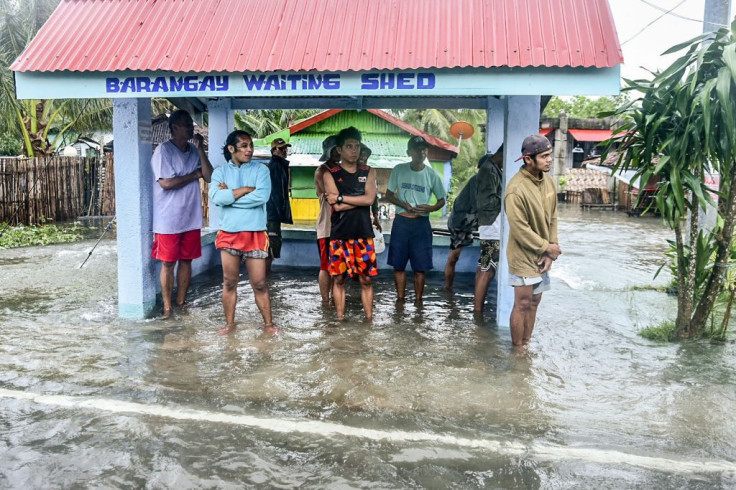Tens of thousands of people have been forced to flee their homes in the Philippines as "one of the year's fiercest storms" made landfall in the island nation's mid-eastern regions.
Typhoon Rai (also known as "Odette") made landfall in Surigao del Norte's Siargao Island around 1:30 a.m. ET, according to PAGASA, the Philippine meteorological bureau.
It warned of "extremely destructive typhoon-force winds" in some sections of the country, as well as storm surges and flooding in coastal areas, as well as landslides and flooding in mountainous areas along the typhoon's route.
Winds have accelerated to 195 kilometers per hour (121 miles per hour) towards the center, with gusts up to 240 kilometers per hour, according to PAGASA (149 mph).
Rai has been classified as a super typhoon by the US Navy's Joint Typhoon Warning Center (JTWC). According to CNN, Rai would be the equivalent of a Category 5 hurricane in the United States. But JTWC, later on, downgraded Rai to a tropical cyclone.
“I’m scared and praying here in my house that this stops now. The wind outside is so strong it’s cutting down trees,” Teresa Lozano, a resident of eastern MacArthur town in coastal Leyte province, told DZMM radio (via NBC News) by telephone. She added that roofs of nearby houses were damaged and that her farming village had lost power.
The coast guard said it had grounded all vessels, stranding roughly 4,000 passengers and ferry and cargo ship workers in several of southern and central ports. Several domestic flights have been canceled, and schools and companies in the most susceptible areas have been closed.
Nearly 100,000 people have been relocated to safer ground, Office of Civil Defense in Manila told The New York Times. There were no initial reports of casualties. However, communications in several regions were cut, making it difficult to assess the situation quickly.
Eight regions in the country have been placed on the highest level of emergency preparedness and response protocol, according to the national disaster mitigation agency, NDRRMC (via Al Jazeera).
The population of the eight regions in the central and southern group of islands in the Visayas and Mindanao areas totals more than 30 million people.
Due to continued torrential rains predicted to last at least three hours, the NDRRMC issued an alert warning of probable flooding and mudslides in the Mindanao provinces of Misamis Oriental, Misamis Occidental, Lanao del Norte, and Zamboanga Del Norte.
Work and online classes have been suspended in several parts of Visayas, too. More than 17,000 people were evacuated in several regions.
The governor of Eastern Samar province, Ben Evardone, said the typhoon forced him to halt vaccines in his almost half-million-strong territory. More than 70% of villages in the province have received at least one vaccination. Evardone is concerned that some vaccinations held in Eastern Samar would expire in the coming months amid the threat of COVID-19.
In his province's limited number of evacuation centers, where more than 32,000 people have been relocated to safety, he claimed overcrowding is inevitable.
“It’s impossible to observe social distancing, it will really be tough,” Evardone told The Associated Press. “What we do is we cluster evacuees by families. We don’t mix different people in the same place as a precaution.”
Every year, the Philippines is hit by about 20 storms and typhoons. The archipelago is also part of the seismically active Pacific "Ring of Fire," making it one of the world's most disaster-prone nations.

© 2025 Latin Times. All rights reserved. Do not reproduce without permission.





